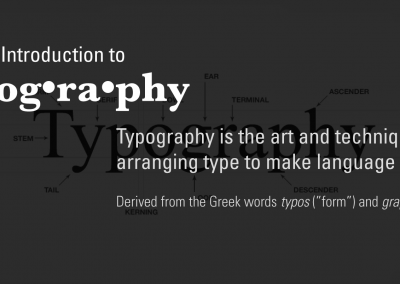Teaching
Philosophy
Today’s embrace of “design thinking” by the non-design world opens doors to tremendous opportunity for designers. The traditional design methodology of gathering research, exploring diverse approaches, and having a broad view toward potential solutions is abuzz in business schools, board rooms, and smaller organizations alike. It seems as if design’s moment in the spotlight has arrived. For the design educator these should be exciting times, but the challenge to prepare our students adequately for work in this expanding field of design will require us to give just as much credence to input from other disciplines and practices as we do to tried-and-true design fundamentals.
In my teaching practice I aim to combine years of broad industry experience and my knowledge of visual design best practices to guide students toward cross-disciplinary approaches to solving design problems. In the introductory and intermediate classes, design fundamentals are initially emphasized and other approaches are introduced as these elementary design skills are mastered. In my upper level classes, advanced visual design topics are introduced and mixed with exposure and encouragement to explore non-design disciplines. Technology, the sciences, data visualization, business, fine art, philosophy, and many others are all fair game. The best and most creative design solutions many times originate outside of the design practice.
Although jobs in traditional design disciplines such as advertising, identity, illustration, etc. will continue to be valid career paths for design students to pursue, it is more likely than not that designers entering the work force will be pursuing increasing numbers of opportunities in digital media, information design, journalism, and user interface and experience design. All of these areas require students having a broader knowledge than traditional visual design curricula have prepared them for. Students open and adept to research and influence from multiple fields will be the ones best able to answer the design needs of the changing market.
In addition to being broad-thinking, students should also be able to write and speak about the design decisions they make and to honestly assess success and failure. I encourage students to plan, create, iterate, and evaluate. Then repeat. Speaking and writing analytically about all of the steps in this process are fundamental to to project progress, gaining well-rounded design knowledge and providing better solutions to the design challenges facing the world today.




